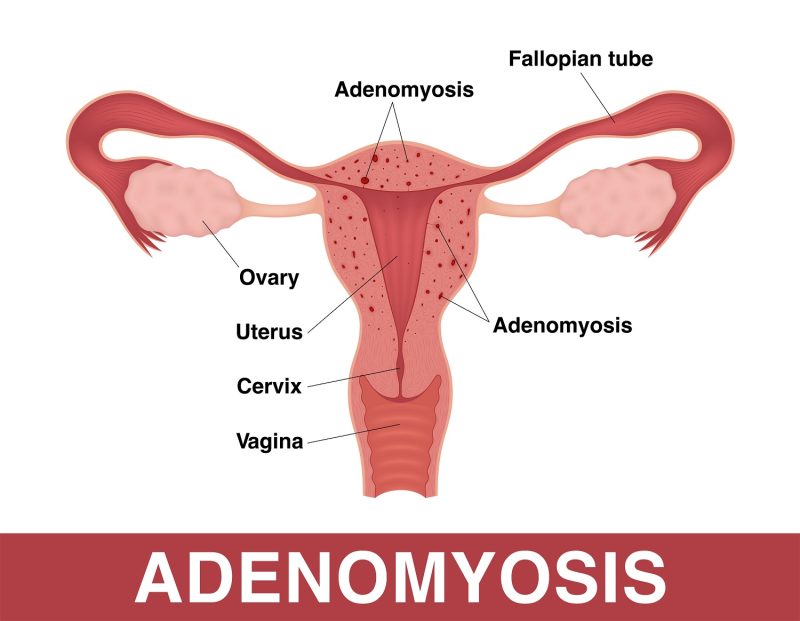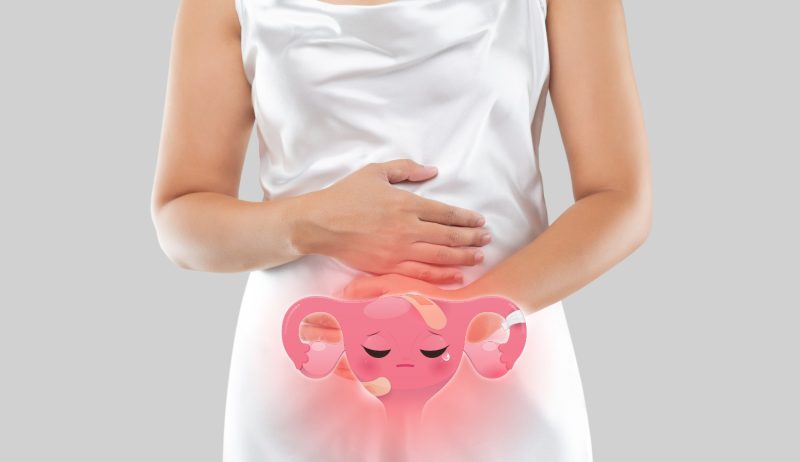Adenomyosis
What Is Adenomyosis?
The name Adenomyosis comes from:
- Adeno = gland
- myo = muscle
- osis = condition
Adenomyosis can be a very painful condition where the endometrial tissue (the uterine lining of the uterus) grows into the uterine wall, the muscle of the uterus. When this occurs, the uterus gets thicker and becomes bulky (enlarged), which can lead to heavy bleeding and longer painful periods.
Adenomyosis is similar to Endometriosis, which causes uterine tissue to grow outside the uterus, and women can often have both of these conditions at the same time.
Adenomyosis can cause inflammation, chronic pelvic pain and severe cramping which can interfere with a women’s daily life.

What are some of the symptoms and signs of adenomyosis?
- Painful and heavy periods
- Blood clots during menstrual bleeding
- Severe pain and menstrual cramps
- Painful sex (dyspareunia)
- Chronic pelvic pain
- Bloating and abdominal pressure
- Iron deficiency or Anemia
- Chronic fatigue
- IBS like symptoms (Irritable Bowel Syndrome)
- Depression and emotional disturbances
- Infertility
Just like with Endometriosis, some women who gets diagnosed with Adenomyosis have no symptoms and are only diagnosed when they are trying to get pregnant.

How Is Adenomyosis Diagnosed?
Adenomyosis can be difficult to diagnose, however the advancements of the imaging technology nowadays have made it possible to find Adenomyosis without laparoscopic surgery. Specialists can find characteristics of Adenomyosis by using transvaginal ultrasound and MRI technology. However, MRI is the best option as an Ultrasound can be inaccurate and miss the signs of the disease, especially if the sonographer performing the Ultrasound doesn’t have the specifically trained eye for this disease.
The first thing to do if Adenomyosis is suspected is NOT to go see your normal GP, but to see an actual specialist.
How Is Adenomyosis Treated and Managed?
Treatment for Adenomyosis depends on the women, the women’s presenting symptoms and the severity of these symptoms, and whether she plans to have children. To this day, a hysterectomy for Adenomyosis is the only cure, however depending on where a woman is in her life, this is obviously not always an option.
Some treatment options can be:
- Medical treatments such as certain type of drugs, hormones like an IUD (Mirena), pain medications
- Complementary medicines like herbal medicines, vitamins, natural supplements, acupuncture, Cannabis Oil
- Anti-inflammatory diets
- Exercise
- Pilates, Yoga, Physiotherapy
- Seeing a Pelvic Floor Specialist
- Meditation
When To Seek Medical Help?
If you are experiencing any of the symptoms above and they are impacting your health (mentally, emotionally and physically), preventing you from functioning normally in your daily life and interfering in your relationship and sexual function – you should reach out to a women’s health specialist that specialises in this specific area.
Sources: Healthline (Adenomyosis), Dr Andrew Orr (Adenomyosis) Webmd (Adenomyosis)
